「地域資源 × 脱炭素(カーボンオフセット)」で、
瀬戸内海の新しい価値を創造する
わたしたちは、瀬戸内海の島々をフィールドに、脱炭素社会の実現に向けて、CO2を「減らす」「出さない」小規模コミュニティの先進モデルを実現します。
Creating New Value for the Seto Inland Sea through Local Resources x Carbon Offsetting
We will use the islands of the Seto Inland Sea as the location to realize a model for decarbonized small-scale communities that reduce CO2.
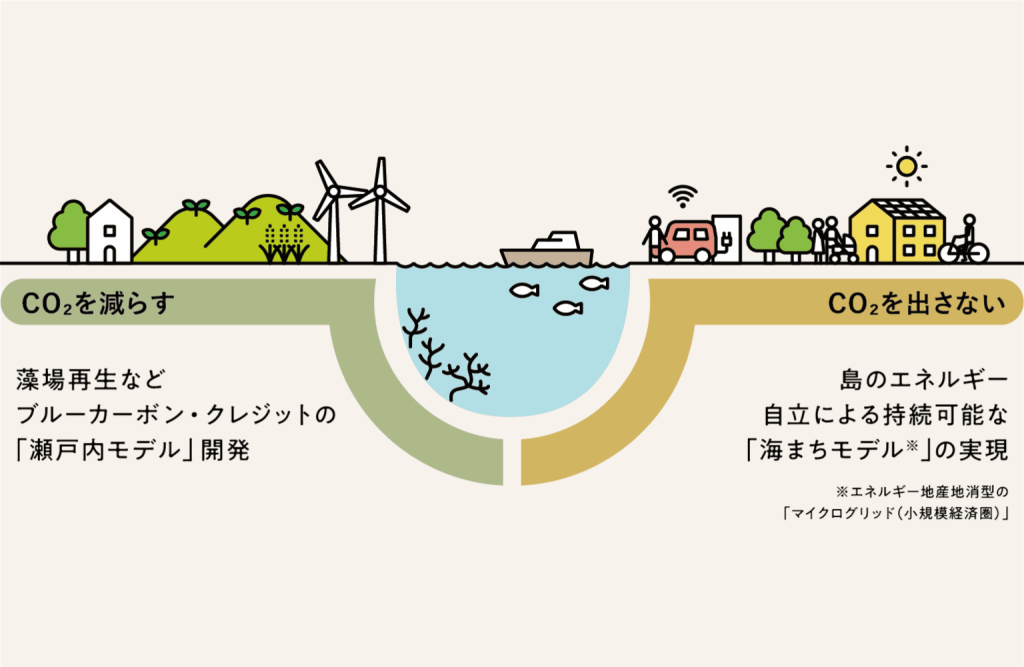
CO2を減らす
海と共生する「ブルーカーボン」の取り組み
“Blue Carbon” initiative to live in harmony with the ocean
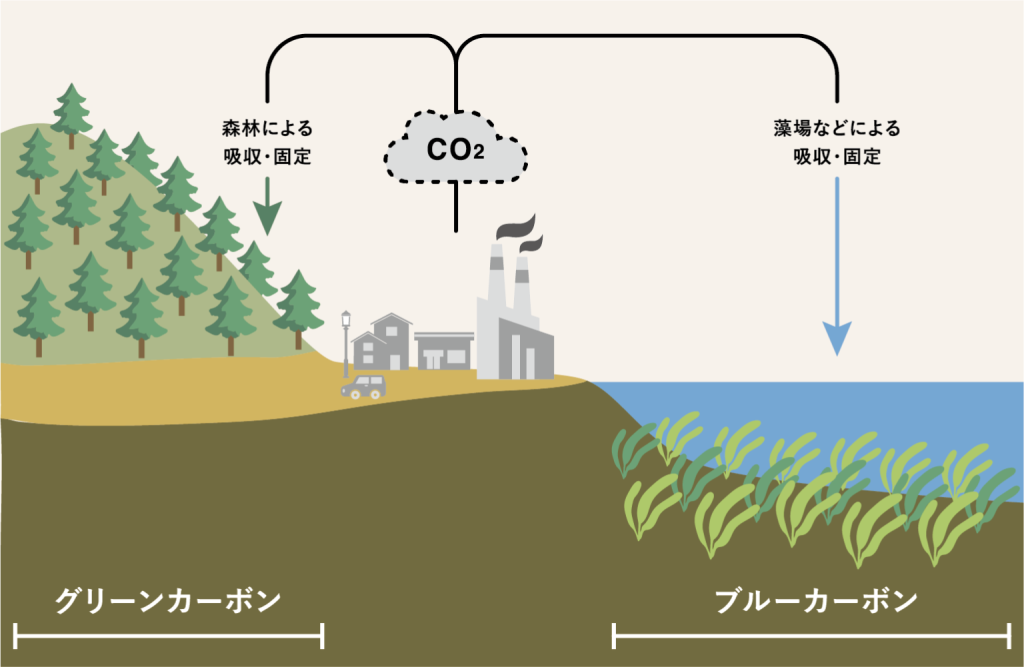
「ブルーカーボン」とは
「ブルーカーボン」とは、海洋生物により海洋環境に吸収・貯留された炭素のこと。国連環境計画(UNEP)が2009年に発行した報告書『Blue Carbon』のなかではじめて定義されました。海藻や干潟、マングローブ林などは、陸上の森林と同じように極めて高い二酸化炭素(CO2)吸収能力を持っており、このブルーカーボン生態系を保護育成することで、吸収されたCO2量をクレジット化し、脱炭素社会に向けたカーボンオフセットに役立てようという取り組みが、世界中で進んでいます。
What is “Blue Carbon”?
Blue carbon” refers to carbon absorbed and sequestered by marine organisms in the marine environment. It was first defined in the report “Blue Carbon” published by the United Nations Environment Programme (UNEP) in 2009. Seaweed, tidal flats, and mangrove forests have the same extremely high carbon dioxide (CO2) absorption capacity as land forests, and efforts are underway around the world to protect and nurture these blue carbon ecosystems in order to credit the amount of CO2 absorbed and use it to offset carbon emissions toward a decarbonized society. This is being done around the world.
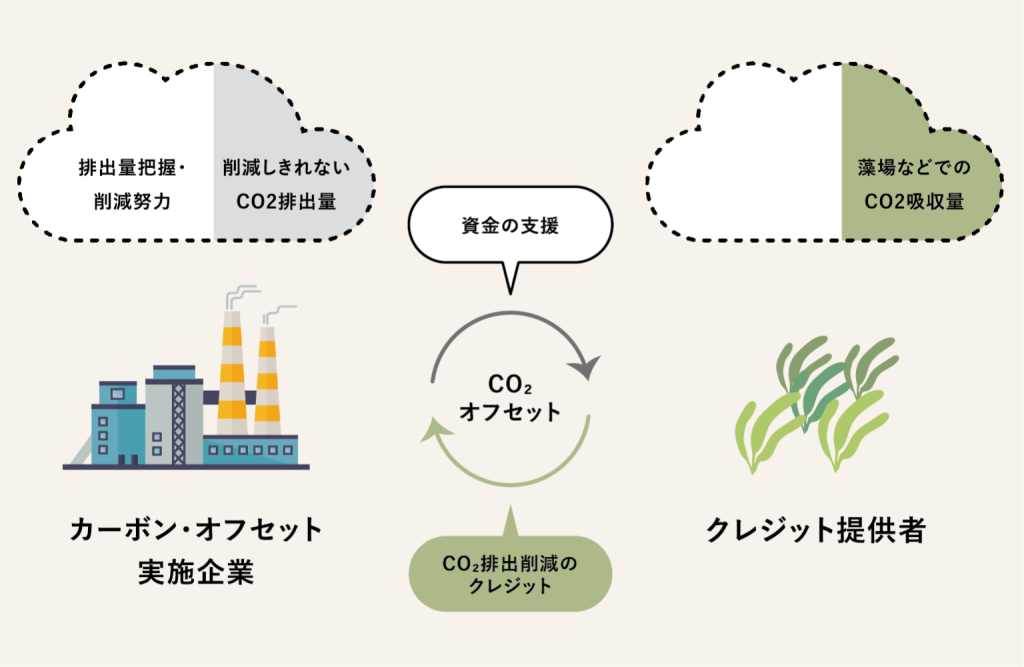
「ブルーカーボンクレジット」とは
企業等がCO2削減に取り組む際、どうしても減らせないCO2排出量を、他所で実現されたCO2削減・吸収量に応じて発行されるクレジットを購入することで、埋め合わせする=オフセットすることを「カーボンオフセット」と言います。日本では、主に省エネ・再エネ設備の導入や森林管理等を対象に、2013年度より「Jクレジット」制度が導入されていますが、2020年度より新たに海洋環境を対象として「ブルーカーボンクレジット」の認証制度が始まりました。
地球温暖化等による藻場の消失や、漁獲量の減少など、海の取り巻く環境は急速に悪化しています。その影響は、漁師や沿岸地域だけでなく、いまや日本中の食卓をも脅かしています。わたしたちは、「海の豊かさを取り戻す」持続可能な取り組みとして、瀬戸内海と都市部や企業をつなぎながら、ブルーカーボン事業を推進します。
<主な内容>
・海藻の専門家らと連携した瀬戸内海に適した藻場再生のノウハウ研究
・ブルーカーボンクレジットの発行支援
・海藻養殖などブルーカーボンを通じた漁業支援
・海のゼロエミッション を体験するスタディツアーなどの観光開発
What is “Blue Carbon Credit”?
“Carbon offset” refers to the offsetting of CO2 emissions that companies and others cannot reduce on their own by purchasing credits that are issued in proportion to the amount of CO2 reduction or absorption achieved elsewhere. In Japan, the “J-Credit” system was introduced in 2013 mainly for offsets through energy-saving / renewable energy facilities, forest management, etc. In 2020, the “Blue Carbon Credit” certification system was newly started for the marine environment.
Marine environments are rapidly deteriorating due global warming and other factors, which has led to the loss of seaweed beds and decrease in fish harvest. This not only effects fishermen and coastal areas, but is now threatening the diet of people throughout Japan. As a sustainable initiative to “restore the richness of the sea,” we are promoting the Blue Carbon Project by connecting the Seto Inland Sea with urban areas and businesses.
●Our initiatives
・Research of seaweed bed restoration suitable for the Seto Inland Sea in cooperation with seaweed experts.
・Support for the issuance of Blue Carbon credits.
・Support for fisheries through seaweed cultivation and other blue carbon activities.
・Tourism development such as educational tours to experience ocean based zero emissions initiatives.
CO2を出さない
小さくっても全部ある、持続可能な
次世代型「うみまち」モデルを考える
Developing a next generation Sustainable Seaside Town.
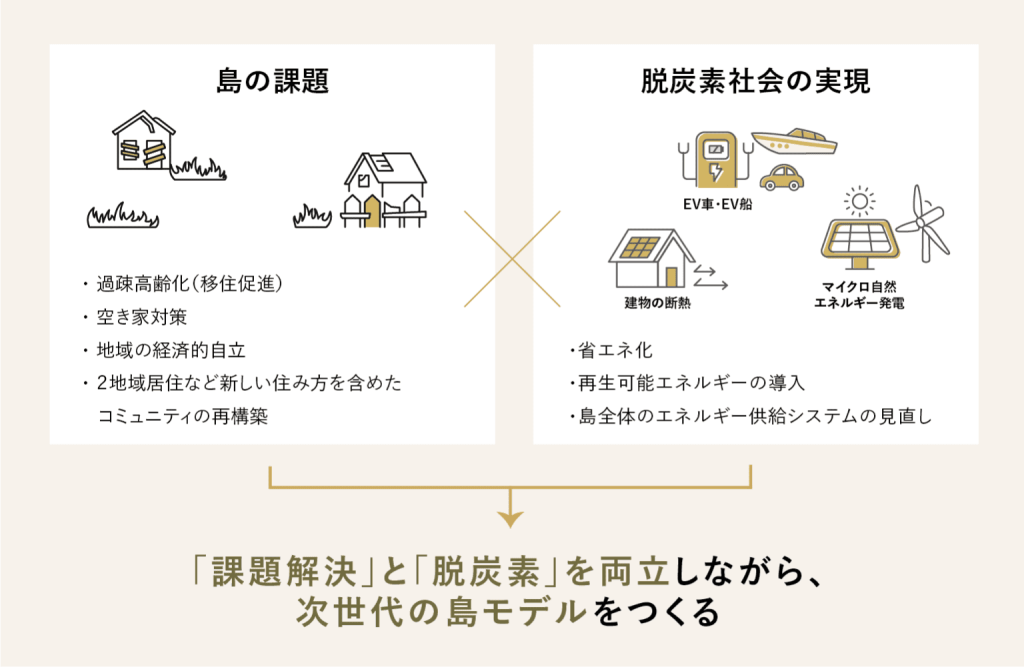
100年後の島暮らしを考える
瀬戸内海には大小727の島があり、そのうち約140島が有人島です。人口2人の島から10万人の島まで、瀬戸内海は古くから国内外をつなぐ海の道として多彩な島文化を育んできました。一方で、有人島のおよそ6割は人口100人以下、65歳以上の割合を表す高齢化率が50%以上という島も珍しくありません。このまま人口が減ると、島暮らしの要である定期船やゴミ回収、医療福祉など、従来の人口規模を前提とした生活インフラでは維持存続が困難になってしまいます。
瀬戸内海には大小727の島があり、そのうち約140島が有人島です。人口2人の島から10万人の島まで、瀬戸内海は古くから国内外をつなぐ海の道として多彩な島文化を育んできました。一方で、有人島のおよそ6割は人口100人以下、65歳以上の割合を表す高齢化率が50%以上という島も珍しくありません。このまま人口が減ると、島暮らしの要である定期船やゴミ回収、医療福祉など、従来の人口規模を前提とした生活インフラでは維持存続が困難になってしまいます。
Thinking about island life 100 years from now
The Seto Inland Sea is home to 727 islands of various sizes, of which approximately 140 are inhabited. From islands with a population of two to those with a population of 100,000, the Seto Inland Sea has long served as a route connecting Japan and the rest of the world, fostering a diverse island culture. On the other hand, 50% of the inhabited islands have a population of less than 100 people, and it is not uncommon to find islands where more than half of the population is elderly. If the population continues to decline at this rate, it will become difficult to maintain and sustain the essential infrastructures of island life, such as regularly scheduled ferries, garbage collection, and medical and welfare services.
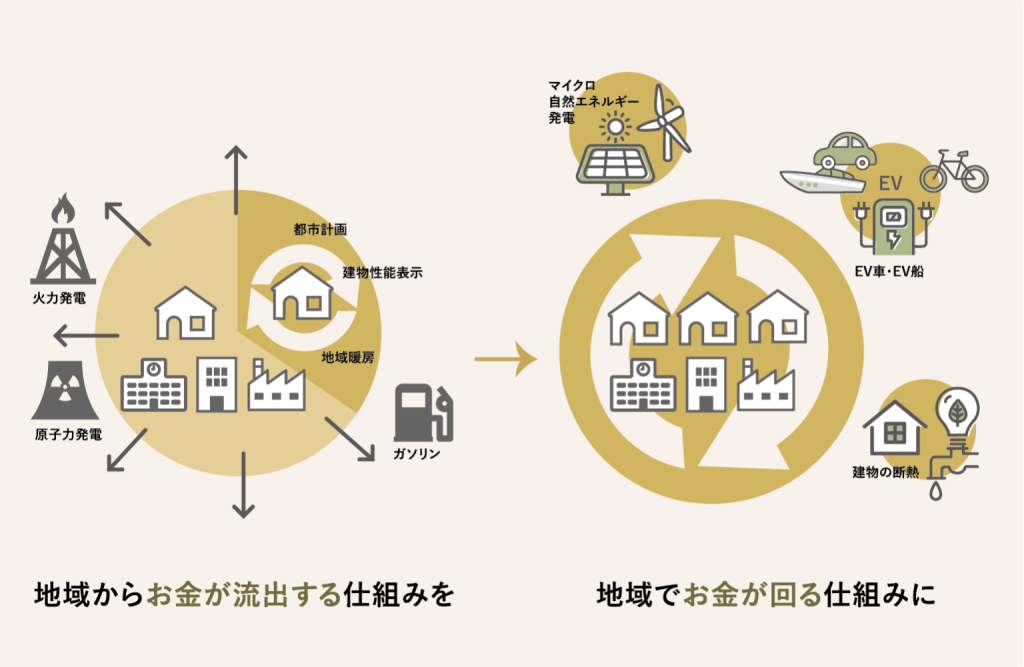
コンパクトだからやれること
人口が減っても島で豊かに暮らし続けるにはどうすればいいか。私たちは、これまでの大きなコミュニティではなく、小さなコミュニティに必要な機能を「小さく、ぜんぶ」揃えた次世代型の「海まち」モデルを考えます。小規模であれば、まちのエネルギーシフトだってやりやすくなります。島にあるものを生かしながらエネルギー消費を抑え、小規模発電等を組み合わせれば、1島丸ごとエネルギー自立型の「マイクログリッド(小規模経済圏)」も夢ではないかもしれません。小さな島からはじめる、大きな挑戦。これも私たちがめざす「ウミライ」の一つです。
<主な内容>
・住宅等のエネルギー診断(エネルギー性能や消費状況の数値化)と、省エネ化に向けた対策提案
・断熱リノベーションに関する研修セミナーの実施
The advantages of working on a smaller scale
How can we continue to live prosperously on the islands even as the population decreases? We are formulating a next-generation “Umimachi” model, in which small communities have all the necessary functions, different from the conventional large communities of the past. Smaller scale will make it easier to shift the community’s energy use. By unitlizing resources available the islands while also reducing energy consumption, and combining that with small-scale power generation, we can create an “micro-grid” island . A big challenge starting from a small island. This is one of “Umirai” we are aiming for.
●Our Initiatives
・Energy audits of homes, etc., and proposals for energy-saving measures
・Conducting training seminars on insulation renovation.